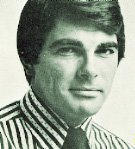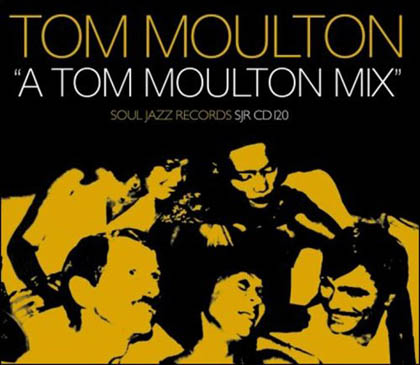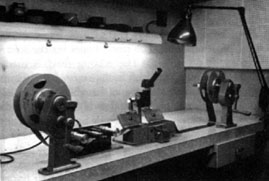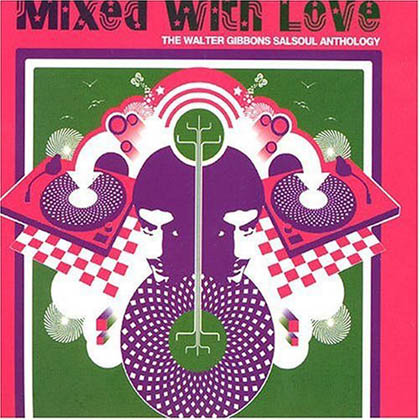1970 - Disco Music

As the 1970's began, the term "rock & roll" had become almost nearly meaningless. This decade began with the breakup of the Beatles and just earlier, the death of Elvis Presley, Jimi Hendrix, Janis Joplin which robbed rock of major influences. Pop music splintered into a multitude of styles: soft-rock, hard rock, country rock, folk rock, punk rock, shock rock and includng jazz rock. As people were dazed by a violent decade of war, assasinations, drugs, and silent corporate takeover, television ignited in comedy programs making way for "Family Pop," or the birth of the teen idols. Earlier, The Monkies, who devised to cash in on the early Beatles' success by applying the most superficial aspects of the British Invasion formula to capture a preteen audience, made way for the advent of Family Pop and the teen-idol beginning with the Jackson Five and Michael Jackson, but the '70s successor to the Monkees were The Partridge Family with the face and voice of teen-idol David Cassidy. Shortly there after, the Osmonds, with younger brother Donny propelling into teen-idol superstardom much like Michael was for the Jacksons. As the teen-idol superstardom continued to produce a slew of others, in the background of that spotlight, rock music was quietly still big business.
Among the top names in popular rock music at the time music were,
The Eagles, Aerosmith, Eric Clapton and Cream, Beach Boys, Neil Young, Crosby-Stills-Nash & Young, Elton John, Alice Cooper, The Who, Lynyrd Skynyrd, Maria Muldaur, Cheap Trick, Toto, Alice Cooper, Frank Zappa, Gordon Lightfoot, Emerson Lake and Palmer, Bread, Golden Earring, Queen, Lynard Skynyrd, Toto, Grand Funk Railroad, Peter Frampton, Billy Joel, Bob Seger, Boz Scaggs, J. Geils Band, Kansas, Jim Croce, Black Sabbath, Rolling Stones, Blue Oyster Cult, Deep Purple, Allman Brothers, Fleetwood Mac, Jefferson Starship, The Sweet, America, Jimmy Buffet, The Cars, Foreigner, Rose Royce, Grateful Dead, Guess Who, ZZ Top, James Taylor, Carly Simon, Carole King, Joan Biaz, Jackson Browne, The Kinks, Led Zeppelin, Bad Company, Bruce Springsteen, Rolling Stones, Chicago, BeeGees, The Temptations, KC & the Sunshine Band, Linda Rondstadt, Hamilton Joe Frank and Reynolds, Sister Sledge, Blondie, Cher, Joe Cocker, CCR, Deep Purple, Doobie Brothers, Supertramp, ELO, Patti LaBelle, Commodores, Kool and the Gang, Olivia Newton John, Roy Orbison, REO Speedwagon, Sly and the Family Stone, Steely Dan, Jackson 5, Rod Stewart, Marvin Gaye, Aretha Franklin, Wild Cherry, *Bay City Rollers, Chic, The Carpenters, England Dan & John Ford Coley, Diana Ross, The Knack, David Bowie, Sister Sledge, The Pointer Sisters, 10cc, The Village People, Santana, Kiss, Paul Anka, Michael Jackson, Pink Floyd, Cat Stevens, The Carpenters, Heart, Jethro Tull, Traffic, Gerry Rafferty, Paul Davis, Chuck Mangione, Yes, Neal Sedaka, Boston, Bobby Sherman, Kansas, Charlie Daniels Band, Steve Miller Band, Simon & Garfunkel, Seals and Croft, Paul McCartney and Wings, Eric Burdon & War, Bread, Yvonne Elliman, Nick Gilder, Andy Gibb, Samantha Sang, Hall and Oates, Stevie Wonder, Loggins and Messina, Leo Sayer, Captain & Tennille, Barry White, ABBA, Rick Springfield, Boston, Styx, Bob Dylan, Derek & The Dominos, Thelma Houston, Stevie Wonder Barry Manilow, Blondie, Pablo Cruise Natalie Cole, Stephen Bishop, John Denver, Anne Murray, Bonnie Tyler, Randy Newman, Roberta Flack and Donny Hathaway, Little River Band, Meatloaf, Three Dog Night, Cat Stevens, Ray Stevens, Tony Orlando and Dawn, and Bob Marley gained a huge core of fans in the U.S. performing Jamaican reggae music.
But the Most influential music of the decade was Disco
Disco is an up-tempo style of dance music that originated in the early 1970s,
mainly from funk and soul music, popular originally with gay and black audiences in
large U.S. cities, and derives its name from the French word discothèque
(meaning nightclub), coined from disc + bibliotèque (library) by La
Discothèque in Rue Huchette.
Deep funk begot proto-disco (1970-1975)
Before the word disco existed, the phrase discotheque records was used to denote
music played in New York private rent or after hours parties like the Infinity, The
Loft and Better Days. The records played there were a mixture of funk, soul and
European imports [LP-cuts or 45s]. We will call this genre of music "proto disco".
These "proto disco" records are the same kind of records that were played by Kool
Herc on the early hip hop scene.
Disco 2.0 (1976-1982)
The times change, the drugs change, new clubs like the Paradise Garage open their
doors, the disco twelve inch was invented. For the first time in musical history,
music was made with "discotheques" in mind. The disco years ended with its gay
audience decimated by a deadly disease called AIDS. My preferred disco labels of this
era are Salsoul, Prelude and West end. A perfect CD-introduction to the music of this
era is the superb three-volume compilation Give Your Body Up: Club Classics &
House Foundations, vol. 1, vol. 2 and vol. 3.
The twelve inch single
The twelve inch vinyl recording was a technical innovation. Because 45s were geared
for radio, they were all 'middle,' and you couldn't cut a lot of [bass] onto the
record, the twelve inch record allowed more bass and made records suitable for night
club play. The first promotional copies appeared in 1975 and the first commercial
release was the 1976 release 'Ten Percent' by Double Exposure, on the Salsoul
label.
The 12-inch single was a late and unexpected child of the recording industry. It was
therefore given a name to distinguish it from its older vinyl siblings. "12-inch"
refers to the diameter of the record — which it shares with the LP. "Single"
refers to the quantity of songs per side — as on the 45 rpm single. Whereas 45s
and LPs have been common fare since the late 1950s and 1960s, respectively, 12-inch
dance singles were issued first in mid-1975, and then only to a small clientele:
disk-jockeys, alternatively known as DJ's, who were perceived to constitute the only
group to become attracted to the new format. --Kai Fikentscher, "Supremely clubbed,
devastatingly dubbed", 1991
1976
Salsoul release the first commercially-available 12 inch. Walter Gibbons takes
double Exposure’s Ten Percent’ and works it into an 11 minute disco
extravaganza. Repetitive beats, disco music as we know it was born.
Walter Gibbons (1954 - 1994)
... he turned otherwise unremarkable dance records into monumental sculptures of sound ...
Profile
 Gibbons was born in Brooklyn on 2 April 1954. He grew up
with his mother, Ann, his sister, Rosemary, and his two brothers, Robin and Edward.
Nothing is known of his father — friends say he never spoke of him — and
little more is known of his young adult life save that he subsequently moved to
Queens, dated men and
collected black
music.
Gibbons was born in Brooklyn on 2 April 1954. He grew up
with his mother, Ann, his sister, Rosemary, and his two brothers, Robin and Edward.
Nothing is known of his father — friends say he never spoke of him — and
little more is known of his young adult life save that he subsequently moved to
Queens, dated men and
collected black
music.
Gibbons was easy to miss. An innocuous white boy with an unconvincing moustache and carefully combed brown hair that was parted right to left, he stood at approximately five foot five and, thanks to his pencil thin build, looked like he would need help carrying his records to work. Shy and softly spoken, he kept himself to himself. He preferred cigarettes to chatter.
But when Gibbons stood behind the turntables at Galaxy 21, an after hours venue on Twenty-third Street owned by black entrepreneur George Freeman, he was hurricane articulate. It was almost as if he kept his daytime thoughts to himself because he knew he could articulate them with so much more force through the Galaxy sound system at night. Why talk when you can DJ? --Tim Lawrence via the liner notes to Mixed with Love, http://www.timlawrence.info/linernotes/2005/walter_g.php [Jan 2005]
First Commercial 12" [...]
It was Gibbons transformation of Double Exposure's Ten Percent from a three minute album track into an eleven minute dancefloor stormer that radically changed the disco undergound in terms of record production, remixing and development of the 12" record. At the time when orchestration was commonly used on dance records, Gibbons' technique was to concentrate on percussion and the song. He was an explorer and innovator of DJ techniques and skills which we now take for granted and he was also considered to be one of the most impeccable live mixers of his time. Walter Gibbons' Djing began in the early 70s in NYC at the Galaxy 21, Fantasia, and Buttermilk Bottom, Second Story in Philadelphia and the Monastery in Seattle. Years before his death Gibbons became a Born Again Christian and wouldn't mix songs with sexual content. However, he resurfaced in 1984 with the unforgettable electro classic Set It Off, and did two more mixes for Arthur Russell in 1986.Ten Percent (Nov 1976) - Double Exposure
Walter Gibbons didn't just electrify fellow DJs and suburban dancers. He also electrified Ken Cayre, head of a newly formed label called Salsoul, which had created a minor tremor in Nightworld with the release of the Salsoul Orchestra's debut album. The Salsoul boss proceeded to sign Double Exposure and realised soon after that Gibbons could help him market the group's first single. "Walter was very aggressive when it came to searching out new records," says Cayre. "He became friendly with Denise Chatman, our promotions girl, and we went to hear him play. I was very impressed with his skills."
Cayre was particularly taken with the way the DJ worked "Ten Percent", which had been released as a non-commercial promotional twelve-inch test pressing that consisted of the standard single plus a longer version. "We knew the DJs wanted longer records so we told the producers to get the musicians to jam for a couple of minutes after they had recorded the regular song," says Cayre. "I had to release the promotional twelve-inch single because the seven-inch wasn't doing well." Having laid his hands on two copies of the test pressing, Gibbons worked up a whirlwind. "He did this fantastic edit and the reaction in the club was phenomenal. I said, 'Can you do that in the studio?' He said he could."
Salsoul gave Gibbons and engineer Bob Blank three hours to complete the remix at Blank Tapes Studios. That meant the duo had one hour to put up the mix and channel the sound, one hour to break down the recording and one hour to cut up tape with a razor blade. "Walter was prepared but he couldn't prepare everything," says Blank. "He had to be ready to do 'brain work' on the spur of the moment. The session was very intuitive. Walter was a real genius."
By the end of the session the diminutive DJ had transformed a dense four-minute song into a nine-minute-forty-five-second roller coaster. He was paid $185 for his efforts — $85 to cover a night's work at Galaxy, plus $100 for the blend — and he started to spin an acetate of the remix, which was effectively a readymade version of the lightning-quick collages he had already been concocting at Galaxy, in late February/early March 1976.
"'Ten Percent' was one of the best mixes anyone had ever heard," remembers Smith. "Walter turned a nice song into a peak song." The remix became an instant classic. "I heard it on an acetate in the Gallery," says Mixmaster editor and downtown connoisseur Michael Gomes. "It sounded so new, going backwards and forwards. It built and built like it would never stop. The dance floor just exploded."
Salsoul released the twelve-inch — the first commercially released twelve-inch — in May, much to the chagrin of the Philadelphia-based songwriter Allan Felder. "The mixer cut up the lyrics and changed the music," Felder told me shortly before he passed away. "It was as if the writers and producers were nothing."
Gibbons didn't set out to offend. Blank notes the DJ-turned-remixer was "very, very, very concerned" the artists, producers and writers would feel he had done the record justice. But DJs were widely regarded as musical parasites and the idea that they should be given carte blanche to remix an original work of art was doggedly opposed by music-makers. The development was seen as being nothing short of scandalous and Gibbons lay at the centre of the action.
Cayre stayed calm and kept his focus. "Walter was the first DJ to show the record companies that they should be open to different versions of a song," he says. "They were in the club night after night so they knew what worked and what didn't work. Walter was pivotal. He convinced producers and other record companies to give the DJs an opportunity to remix records for the clubs. And he showed us that these records could be commercially successful. People didn't believe that was possible before 'Ten Percent'. Walter was a pioneer." --Tim Lawrence via the liner notes to Mixed with Love, http://www.timlawrence.info/linernotes/2005/walter_g.php [Jan 2005]
Biography
Apr 02 1954 to Sep 23 1994Hit and Run (1977) - Loleatta Holloway
[t]he DJ's remix of Loleatta Holloway's "Hit And Run", which was recorded at Sigma Sound in April 1976 and released on Holloway's album, Loleatta, in December. Gibbons asked Cayre if he could remix the song and the Salsoul chief, taking a deep breath, decided to entrust his little prince with the multitrack [see also: http://en.wikipedia.org/wiki/Multitrack_Recording]. "'Hit And Run' was the first time that a studio let a DJ completely rework the song," says Cayre, "and Walter, the genius that he was, turned it into a twelve-minute, unconventional smash."
Having been restricted to carrying out a cut-and-paste reedit of the half-inch master copies for "Ten Percent", Gibbons was now able to select between each individual track, and he dissected and reconstructed the six-minute album version in the most sweeping manner imaginable: a swathe of strings and almost all the horns were sliced out in order to emphasise Baker, Harris and Young's exquisite rhythm track, and, in a high-risk move, the remixer shifted the focus of the song by cutting the first two minutes and all of the verses of Holloway's vocal.
Salsoul's bigwigs were aghast. "When Walter played me his mix I initially wanted to choke him," says Cayre. "Loleatta wasn't there anymore. Walter just told me that I had to get used to it." Always up for a party, the mogul went to listen to Gibbons play the twelve-inch in its intended setting and "after hearing it a couple of times" he knew that Gibbons "had done the right thing." --Tim Lawrence, http://www.timlawrence.info/linernotes/2005/walter_g.php [Jan 2005]
Trivia: Carl Craig's Throw (Open) (1994) is based on a small sample from "Hit and Run" [about 7 minutes into the original]
Tape Editing, from Reel to Reel [...]
What I say is that the first 'cut-ups' were by Walter Gibbons - the first great 'mixing' DJ. These date from 1974/5 and use funky records like The Fatback Band [building] up to latin percussion jams, cut up on reel-to-reel tape … and used to provide a continuous mix (sometimes 20 minutes plus) in the clubs of New York. A good example of this would be the 'looped up' 'break' (remember, nobody knew these terms back then!) from the Cooley High soundtrack album [‘Two Pigs and a Hog’]. First he used two copies [of the record] to capture the break, then did it on tape to be cut onto an acetate, thus saving the hassle of doing it live all the time. -- Colin Gate via http://home.wanadoo.nl/discopatrick/history.htm [Jan 2005]
Gibbons, Luongo, Herc
Performing in parallel yet unconnected universes, DJ Kool Herc in the Bronx and John Luongo in Boston started to play back-to-back breaks around the same time as Gibbons, but neither of them could match the Galaxy mixmaster's razor precision. --Tim Lawrence, http://www.timlawrence.info/linernotes/2005/walter_g.php [Jan 2005]
1983 Profile by Steven Harvey
Outside a disco Walter Gibbons is the least known of the mixers profiled here. This in no way diminishes his importance. Walter not only mixed the first 12 Inch single '10 Percent' by Double Exposure - he completely transformed it from a three minute album track into 11 minutes of break after break. It was a revolution - a record designed specifically for the underground club scene in New York."You really have to think that every time you change the record, the title or something about the record is going into people's heads. For me, I have to let God play the records, I'm just an instrument."
His trademark was a concentration on the percussion, the song and the singer. Where many of the period releases by Salsoul were heavily orchestrated, Walter stripped down his tracks to essence. Two Salsoul albums, 'Disco Boogie Vols 1 & 2' (the first disco party album) and 'Disco Madness' feature his mixes. The latter has him singing 'It's Good For The Soul', a perfect slice of what he is playing now and the reason he no longer works in the dance music industry. When he became a born-again Christian he stopped playing songs that were not uplifting. That pretty much eliminates the majority of dance music dealing with sexuality.
Walter was considered to be one of the most impeccable live mixers of his time. He could play the impossibly slow intros to 'Love Is The Message or 'Love Hangover' and still keep the dancing going by his edits of the segues. He anticipated breakstyle mixing with his percussion blends of tunes like 'Two Pigs and A Hog' (from Cooley High soundtrack) a one minute break that he would cut up with two copies.
Many people think that in the vastly competitive dance music business, once you drop out you are through. If Walter's faith keeps on, some record company might realise that he would be the perfect mixer for a new Philly style release or a gospel dance track. Perhaps 'Faith' - the unreleased track he mixed and produced with Steve D'Aquisto - would be a good place to start
From the beginning of playing records, the issue was getting a message or narrative across through the songs. Now it's 'in the mix'
''I think I did that. I used to keep a book of what were my top records every week, Looking back it scares me - at that time I wasn't very Christ minded. Music is too easy to make - there are Spirits in records. You really have to think that every time you change the record, the title or something about the record is going into people's heads. For me, I have to let God play the records, I'm just an instrument.''
That's appropriate to DJing as a modern art form where the DJ is basically the instrument, the medium for other people's music.
' Unlike most DJs, I do requests I like to know what they're thinking too, The thing about requests is if you can change what they're thinking into something positive. This girl used to like 'Nasty Girls' so I'd play it. My thought behind that would be a record like 'Try God' by the NY Community Choir which is the total opposite."
Sort of advocate style spinning. "The last time I saw Tee Scott I bought a record for him. it was a mix of 'Law Of The Land' by Undisputed Truth with a little bit of 'Ten Percent' and the Ten Commandments spoken. He played it and the crowd roared like I've never heard in my life. Especially after the part where he's saying 'thou shalt not commit adultery, thou shall not steal. thou shall not kill' - there was such a roar. it was like WOW, compared to what they hear normally. It was very interesting." --Steven Harvey, 1983, Collusion Magazine
Profile
It was a New York disco-era deejay, Walter Gibbons, who pioneered many of the techniques of disco mixing that would become the lifeblood of house deejays-turned-producers in the `80's. After years out of the spotlight, Gibbons resurfaced in 1984 with a mix of a 12-inch single called 'Set It Off' that would define the New York dance underground. It created a sensation at the Garage, where it was championed by Levan, and spawned countless remakes by the likes of C. Sharp and Masquerade and at least one answer single, Number 1's 'Set It Off (Party Rock)'. Perhaps the definitive version of 'Set It Off' was Strafe's, with its mesmerizing vocal hook woven into a spare but hauntingly atmospheric rhythm bed.-- Greg Kot
Francois Kevorkian
February 1976: Walter Gibbons was DJ at the Galaxy 21 when Francois K. got hired to play live drums over Walter's records.
Faze Action
Faze Action on Walter Gibbons: "Like Brian Jones and Keith Richards poring over their blues records, Faze Action are purist scholars of the form -- for them the Salsoul Orchestra is Howlin' Wolf and Walter Gibbons is Muddy Waters." [...]
Selected Discography
-
12D-2008 Double Exposure 'Ten Percent' (1976)
first commercially available 12"
- 12D-2011 Salsoul Orchestra 'Nice 'n' Nasty' (1976)
- 12D-2030 Anthony White 'I Can't Turn You Loose'/'Block Party' (1977)
- SG 2067 Cellophane 'Super Queen' (1978)
- SG 2071 Luv You Madly Orchestra 'Rocket rock / Moon maiden' (1978)
- SG 311 Robin Hooker Band 'Stand By Your Man' (1979)
- WES 12113 Bettye Lavette 'Doin'the Best I Can (Short)' (1978)
- WES 12113x Bettye Lavette 'Doin'the Best I Can (Long)' (1978) go for the long version
- Colleen Heather: "Heartbreaker" LP (West End WE 108, 1979). Co-credited.
- GG-402 Loleatta Holloway 'Catch Me On the Rebound' (1978)
- GG-40O3 Love Committee 'Cheaters Never Win' (1977)
- GG-4006 Loleatta Holloway 'Hit And Run' (1977)
- GG-4011 Love Committee 'Just As Long As I Got You' (1978)
- True Example: "Love is finally comin' my way" b/w "As long as you love me" (Gold Mind 12G 4005, 1977). Two releases exist of this record. One credit Walter Gibbons while the other not.
- Salsoul
- Various Artists: Saturday night disco party (Salsoul SA 8505, 1978). Co-credited with Tom Moulton & Jim Burgess
- Salsoul Orchestra: Greatest disco hits (Salsoul SA 8508, 1978)
- Various Artists: Disco madness (Salsoul SA 8518, 1979)
- Various Artists: Salsoul's greatest 12" hits Vol. 1 (Salsoul CA 1002, 1982), Co-credited with Tom Moulton
-
SLX-23 Indian Ocean 'Tree House' / 'School Bell' 1986
- Produced by Arthur Russell and Peter Zummo
- Mixed with Love by Walter Gibbons
- Upside rds
-
Logarythm 12" LR-1002-1 1002 Arthur Russell 'Let's Go
Swimming' (1986)
-
gulf stream dub / puppy surf dub / coastal dub /
Coastal dub Mixed with Love by Walter Gibbons
-
gulf stream dub / puppy surf dub / coastal dub /
- Jus Born records
-
Strafe 'Set It Off' (1984)
- Steve Standard and George Logios (Bombers?)
- Various
- Sandy Mercer: "Play with me" b/w "You are my love" (H&L 2005, 1978), co-credited with Steve D'Acquisto
- Gladys Knight & the Pips : It's a better than good time (Buddah DSC 130, 1979). Canadian issue. I never saw an american print of this.
History of House
Most Chicago DJ's admit a debt to the underground 1970's underground club scene in New York and particulary the original disco-mixer Walter Gibbons, a white DJ who popularised the basic techniques of disco-mixing, then graduated to Salsoul Records where he turned otherwise unremarkable dance records into monumental sculptures of sound.It was Gibbons who paved the way for the disc-jockey's historical shift from the twin-decks to the production studio. But ironically, at the height of his cult popularity, he drifted away from the decadent heat of disco to become a "Born Again Christian", having created a space which was ultimately filled by subsequent DJ Producers like Jellybean Benitez, Shep Pettibone, Larry Levan, Arthur Baker, Francois Kervorkian, The Latin Rascals, and Farley "Jackmaster" Funk. Most people believed that Walter Gibbons was a fading legend in the early history of disco, then in 1984 he resurfaced, and had a new and immediate impact on the development of Chicago House Sound. Gibbons released an independent 12" record called "Set It Off" which started to create a stir at Paradise Garage, the black gay club in New York, where Larry Levan presided over the wheels of steel. Within weeks a "Set It Off" craze spread through the club scene, including new versions by C. Sharp, Masquerade, and answer versions like Import Number 1's "Set It Off(PartyRock)". The original record had been "mixed with love by Walter Gibbons" and was released on the Jus Born label, a tongue in cheek reference to Walter's christianity. Gibbons had set the tone again, the "Set It Off" sound was primitive house, haunting, repetitive beats ideal for mixing and extending. It immediately became an underground club anthem, finding a natural home in Chicago, where a whole generation of DJ's including Farley and Frankie Knuckles, rocked the clubs and regularly played on local radion stations. -- Stuart Cosgrove on The History of House Sound of Chicago BCM Records, Germany
Set it Off
- The Perfect
Beats, Vol. 2 [Amazon US]

1. Let The Music Play - Shannon 2. I.O.U. - Freeze 3. Dancing On The Fire - Jellybean 4. Crash Goes Love - Loleatta Hollaway 5. My Love Is Alive - Chaka Khan 6. The Dominatrix Sleeps Tonight - Dominatrix 7. For The Same Man - B Beat Girls 8. Infatuation - Upfront 9. Hip Hop Be-bop - Man Parrish 10. Set It Off - Strafe 11. Moody - Esg 12. Cavern - Liquid Liquid 13. Together Forever - Exodus 14. Confusion - New Order 15. Slack - Slack
Following the history lesson of volume 1, The Perfect Beats, Volume 2 reaches a little wider in its selection of electro-boogie, hip-hop, and freestyle oldies. This seems to be the set's unofficial "happy" disc--some of the fastest cuts are on this volume, as well as the lightest and most playful. (Even the monochromatic series package design adds to the effect--this volume's a sunny orange.) "Let the Music Play" by Shannon (one of the highest-charting records in the collection) appears in a livelier-than-life remix, and just try to resist the bubbly synth-vibraphone on Dominatrix's "The Dominatrix Sleeps Tonight." Lots of these cuts will be familiar as the source of samples that fueled bigger hits, especially Liquid Liquid's "Cavern," which formed the basis for Grandmaster Flash and Melle Mel's huge rap record "White Lines." --John Sanchez
Mixed with Love (2004) - Walter Gibbons
Beluga (2004) - Jean Van Cleemput [Amazon.com] [FR] [DE] [UK]
1. Ten Percent (Original 12" Mix) 2. Block Party (Original 12" Mix ) 3. Catch Me On The Rebound (Original 12" Mix) 4. Just As Long As I Got You (Original 12" Mix) 5. It’S Good For The Soul (Original Lp Remix) 6. Let No Man Put Asunder (Original Lp Remix) 7. Love Is Finally Coming My Way (Original 12” Mix) 8. We’Re Getting Stronger (Original 12" Mix) 9. Ice Cold Love (Original Lp Remix) 10. Cheaters Never Win (Original 12" Mix) 11. Law & Order (Original 12" Mix) 12. Catch Me On The Rebound (Original Lp Remix) 13. As Long As You Love Me (Original 12" Mix) 14. I Can’T Turn You Loose (Original 12" Mix) 15. My Love Is Free (Original Album Remix) 16. Hit & Run (Original 12" Mix) 17. I Wish That I Could Make Love (Original Lp Remix) 18. Nice N’ Naasty (Original 12" Mix) 19. Where Will It End (Original 12" Mix) 20. Salsoul 3001 (Original 12" Mix) 21. Moon Maiden (Original 12" Mix) 22. (Dance With Me) Let’S Believe (Original 12" Mix) 23. Catch Me On The Rebound Inst (Original 12" Mix) 24. Ten Percent (Original Lp Remix) 25. Rocket Rock (Original 12" Mix) 26. Magic Bird Of Fire (Original Album Remix) 27. Super Queen (Original 12" Mix) 28. Stand By Your Man (Original 12" Mix) 29. Your Cheatin’ Heart (Original 12" Mix)
Yet Walter Gibbons, against all odds, still became a DJ's DJ. "Everyone was going to hear Walter," says Smith, who would go down to Galaxy once he had wrapped up for the night at Barefoot Boy. "Most DJs finished at four so we could hear Walter from five until ten." After that, Gibbons and Smith would go for breakfast and, weather permitting, a trip to the beach, where they would talk about music. "DJs couldn't go and listen to too many people because we had played all night and didn't want to hear the same thing all over again. But we knew Walter would turn us on. Everyone showed up." --Tim Lawrence via http://www.timlawrence.info/writing-pages/wg_mixed-w-love.html [Jan 2005]
[...]
Having been restricted to carrying out a cut-and-paste reedit of the half-inch master copies for "Ten Percent", Gibbons was now able to select between each individual track [see also: http://en.wikipedia.org/wiki/Multitrack_Recording], and he dissected and reconstructed the six-minute album version in the most sweeping manner imaginable: a swathe of strings and almost all the horns were sliced out in order to emphasise Baker, Harris and Young's exquisite rhythm track, and, in a high-risk move, the remixer shifted the focus of the song by cutting the first two minutes and all of the verses of Holloway's vocal. --Tim Lawrence via http://www.timlawrence.info/writing-pages/wg_mixed-w-love.html [Jan 2005]
Tom Moulton
 Tom Moulton was a fashion model on hiatus from the music
business when he visited Fire Island's Botel during a photo shoot. "I got a charge
out of it, all these white people dancing to black music."
Painstakingly, he spent 80 hours making a 90-minute dance tape using sound-on-sound
and vari-speed to create a nonstop build. The Botel's owner rejected the tape, but
the competing Sandpiper offered to listen, and Moulton left the reel. At 2:30 on a
Saturday morning, Moulton was awakened by a call from the Sandpiper that was
unintelligible except for the screaming of dancers. To a tape!
Tom Moulton was a fashion model on hiatus from the music
business when he visited Fire Island's Botel during a photo shoot. "I got a charge
out of it, all these white people dancing to black music."
Painstakingly, he spent 80 hours making a 90-minute dance tape using sound-on-sound
and vari-speed to create a nonstop build. The Botel's owner rejected the tape, but
the competing Sandpiper offered to listen, and Moulton left the reel. At 2:30 on a
Saturday morning, Moulton was awakened by a call from the Sandpiper that was
unintelligible except for the screaming of dancers. To a tape!
Biography
Tom Moulton (1940) is an American record producer and originator of the remix and the 12-inch vinyl format.He was one of the earliest disco DJs in New York, USA. --http://en.wikipedia.org/wiki/Tom_Moulton [Aug 2005]
The First 12" was a 10" :-)
"OK, Well - You have to remember something - so many great ideas are accidents...
I mean - I thought it [the 12" single] was a great idea
AFTER the fact.
You see, this is going back now to the early 70's, when I first started I took my records to Media Sound to master.
Tom continues; "So, the thing is - one day I went in there to José -
José Rodriguez - and I had "I'll be holding on" by Al Downing
and I said; "José, I could really need some acetates." And he said; "Just Tom,
I don't have any more 7" blanks. All I have is like the 10"." And I said; "Well, if
that's the only thing - we're gonna do it, what difference does it make?". So he cut
one, I said; "It looks so ridiculous, this little tiny band on this huge thing. What
happens if we just like... can we just like, you know, make it bigger?". He goes;
"You mean, like spread the grooves?" and I said; "Yeah!". He goes; "Then I've
got to rise the level." I said; "Well, Go ahead - rise the level." And so he cut it
like at +6. Oh, when I heard it I almost died. I said; "Oh my God, It's so much
louder and listen to it. Oh! I like that - why don't we cut a few more?". So it was
by accident, that's how it was created.
But for the next song we cut, we went for the 12" format instead of the 10" and
the song was "So much for love" by Moment of Truth. That was the birth of the
12" single.
--
Claes Widlund interviews Tom Moulton (1999) http://disco-disco.com/tributes/tom.html [Dec 2004]
On Vince Montana [...]
Tom Moulton in an interview with Claes Widlund :And, if you listen to Vince you would think that Gamble & Huff kept stealing from him. Look at this, it has been so many times where I have tried to help out Vince and I just don't understand him.
But at Salsoul... He got mad at me when I produced the album the... Oh, what the hell was it called now - "Street sense". And I was only asked to do it because Vince was being so difficult with Salsoul. He was giving Salsoul such a hard time. And then I remixed the Christmas album, he knows that."
"You know, Vince can not say someone else does anything good. I wish I could understand him, I just don't. I just try and try and try, but I just don't understand him, so... 'Cause he didn't tell you that his album "Close Encounters of the Third Kind" - this is after he starts mixing his own records "A Vince Montana Mix". I mean, that's about as close to copying me as anybody can. And then he begs me to mix his album because Atlantic rejected it. He called me the day before Christmas and begged me. I said "Vince, I can't do this." He said "You're a shit" and then "Oh Tom, I'm sorry and bla bla bla bla bla" I mean, I couldn't believe it - no one else could either.
And I said "Vince, I'll do it on two conditions...". He said "What's that?". I said "You are not there and if you say one word to me other then Hello or Goodbye - I'm leaving!". And he did, and no one would believe it. Well I ended up mixing it, then they accepted it." --
Claes Widlund interviews Tom Moulton (1999) http://disco-disco.com/tributes/tom.html [Dec 2004]
Profile by Brian Chin
Tom Moulton's concepts singlehandedly created a new industry of remixing--producing records with greater dance impact. He leapfrogged Philadelphia sonics by rebalancing the frequency range, extending the high frequencies much further than Motown ever did. "Because 45s were geared for radio, they were all 'middle,' and you couldn't cut a lot of [bass] onto the record. A lot of records didn't have the fidelity and sounded terrible. But you were playing them for the songs, not the fidelity."
That regard for the integrity of a song also guided Moulton in the studio. He not only sharpened sound for high-volume nightclub play, but he also restructured records, setting up hooks and repeating the best parts, greatly amplifying the original song scheme's tension and release. He'd tweak levels obsessively all through the record--effectively rephrasing a track or vocal by hitting the volume control--when he felt it would increase intensity. "I was so wired into the song. They thought I was crazy. But you go for the blood and guts, the thing that really counts in a song." Moulton's hook might be a mistake by the players, and he points out that the insane sonic power of "Disco Inferno" happened when he was compensating for a console that was set up wrong. Repeatedly--with the simple woodblock in "More, More, More (Part 1)," in the strong but never overdone pop pump of "Instant Replay"-- Moulton made good records stronger. His blueprint has been used thousands of times over.
Moulton worked in promotion for Scepter Records, and mixed DCA Productions' "Dream World" by Don Downing for the label. In 1974, when DCA called him to work on Gloria Gaynor's first album, he made history. Never Can Say Goodbye featured a side-long medley of three long songs segued together. Meco Monardo says it was "a revelation" when Moulton extended three-minute songs to more than six by lengthening the instrumental. But Moulton knew by instinct that this would intensify and modulate the impact of a song or a series of songs: "You start here [he points down], and go allll the way up." Incredibly, Moulton's credit does not appear on the album because of a potential conflict: he'd by then launched the first music trade-paper column on the scene, "Disco Mix," in Billboard.
Like everything else in disco, formula set into remixing, but it wasn't Moulton's fault. He often critiqued remixers for making music into a DJ tool, instead of mixing to maximize the original intent of a song. He used drum breaks, for example, as transitions within a song, to set up an emotional rush with the return of the rest of the music, or when key changes made a break necessary to create dramatic structure--not merely because drum breaks made it easier for a DJ to mix in or out of a record. "People have said, 'You make disco records,' and I said: 'Wrong. I make records you can dance to.' I wouldn't know how to make a record just for discos." source: http://www.rhino.com/features/liners/75595lin7.html
Disco Records
"People have said, 'You make disco records,' and I said: 'Wrong. I make records you can dance to.' I wouldn't know how to make a record just for discos."
Soul Jazz presents: A Tom Moulton Mix (2006) - Various Artists

Soul Jazz presents: A Tom Moulton Mix (2006) - Various Artists [Amazon.com] [FR] [DE] [UK]
Track Listings
1. I'll Be Holding On 2. Keep On Truckin' 3. La Vie En Rose 4. Moonlight Loving 5.
Peace Pipe 6. Dream World 7. You've Got The Power 8. Make Me Believe In You 9. Free
Man 10. Needing You 11. Feel The Need In Me 12. Moonboots 13. Lip Service 14. Love Is
The Message 15. More More More 16. Won't You Try
Product Description
''A Tom Moulton Mix'' is released today on Soul Jazz Records. This is the first
album to bring together some of the classic and rare tracks that have been blessed
with the phrase "A Tom Moulton Mix" on the record label. Tom Moulton is one of the
most important people in the history of dance music. From inventing the first ever
12" single to remixer to the stars, the trademark "A Tom Moulton Mix" is a mark of
quality given to only the finest records -From Grace Jones' seminal "La Vie En Rose"
to the million-selling MFSB disco anthem "Love Is The Message", to over 4000 remixes
in an incredible career that has now lasted over 30 years.
New Tom Moulton compilation on Soul Jazz.
Source: www.jahsonic.com
Disclaimer






0 Comments:
Post a Comment